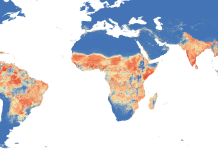Dimensionality Reduction

ABOUT
For handling and processing data with a high dimensionality adequatly, its dimensionality has to be reduced. Dimensionality reduction means to reduce data to its intrinsic dimensionality in order to create a meaningful presentation of the data.
Having a mimimum number of parameters necessary to account for the observed characteristics of the data, facilitates processing hig-dimensional data. Among others, classifying, visualising, and compressing the data is much easier if its dimensionality is reduced. Depending on the properties of the data, different dimensionality reduction methods need to be implemented. Consequently, there are linear techniques for reducing the dimensionality of linear data and non-linear techniques for complex data.
RESOURCES
Van Der Maaten, L., Postma, E., & Van den Herik, J. (2009). Dimensionality reduction: a comparative. J Mach Learn Res, 10, 66-71.
Filter, L. V., & Filter, P. C. A. (2014). Seven Techniques for Dimensionality Reduction.
Cunningham, P. (2008). Dimension reduction. In Machine learning techniques for multimedia (pp. 91-112). Springer Berlin Heidelberg.
Zahorian, Stephen A.; Hu, Hongbing (2011). "Nonlinear Dimensionality Reduction Methods for Use with Automatic Speech Recognition". Speech Technologies.











